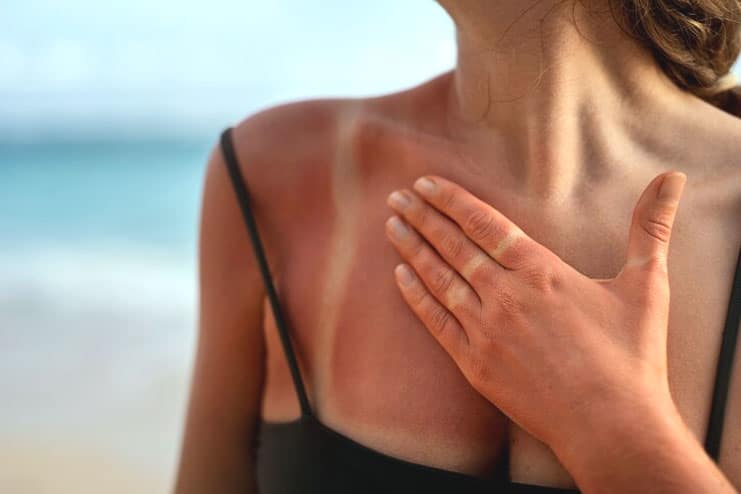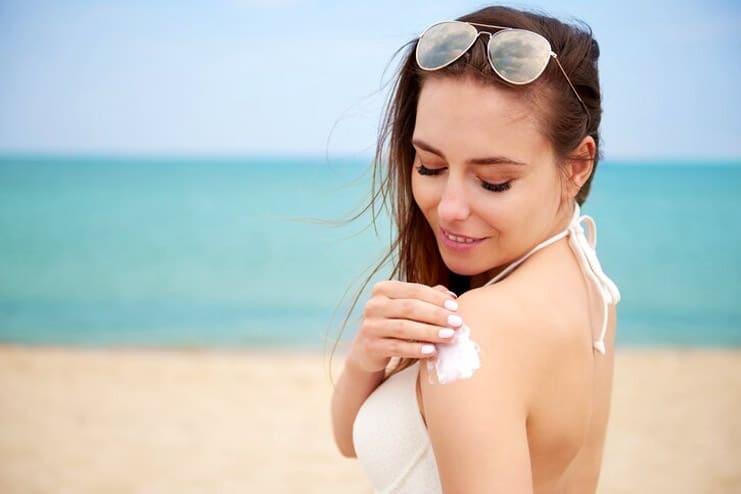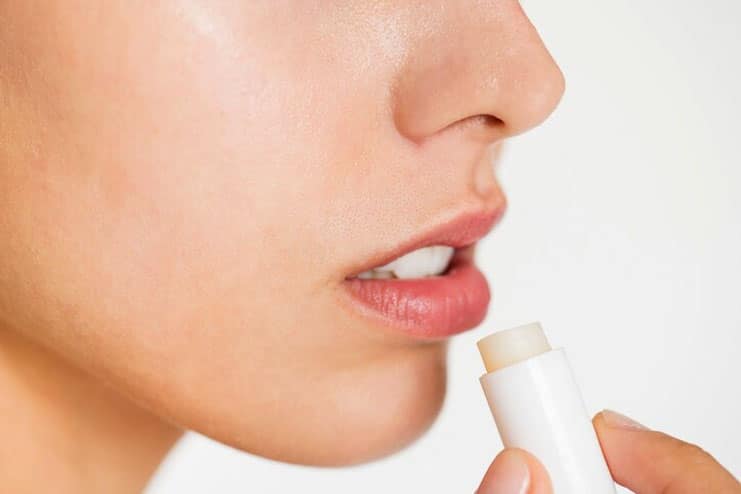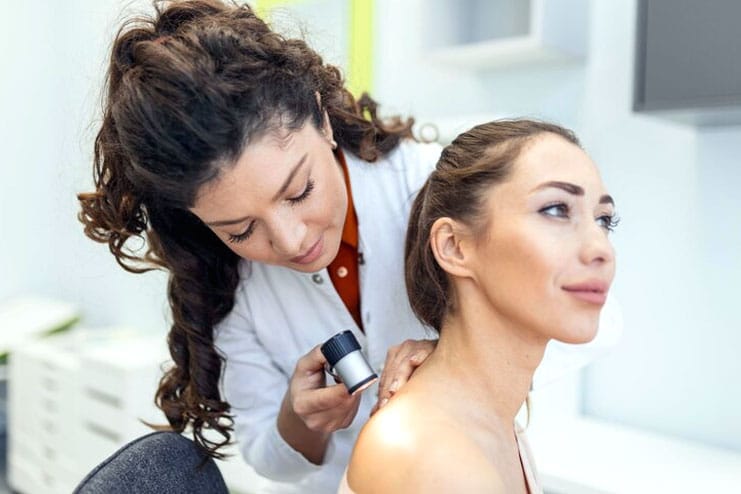Affiliate Disclaimer
Some links in this article are affiliate links. We may earn a small commission if you make a purchase through these links, at no extra cost to you. We only recommend products we find useful to our readersThe sun’s warm embrace is associated with happiness and energy, but unprotected sun exposure can affect our skin health. The number of skin cancer cases has increased, and a significant percentage of these cases can be directly linked to extended sun exposure and the dangerous ultraviolet (UV) radiation it produces.
Skin cancer is a potentially preventable ailment and should make us reassess our sun-related behaviors. We may enjoy the sun responsibly by taking proactive steps to ensure that its warmth brings happiness without endangering the health of our skin.
This article highlights sun safety precautions to reduce the risk of skin cancer and prevent skin damage.
Sun Exposure and Skin Cancer

Even though sun exposure is necessary for the production of vitamin D and for maintaining overall health, it does come with a significant drawback: an increased risk of developing skin cancer. The destructive effects of ultraviolet (UV) rays on the DNA of our skin are the underlying cause of the complex link between overexposure to the sun and the development of skin cancer.
The three ultraviolet (UV) rays that the sun emits – UVA, UVB, and UVC, are well-known for their capacity to penetrate the skin and induce cellular damage. UVA and UVB rays can reach the Earth’s surface and are dangerous. If these rays come into contact with the DNA found in skin cells, they can potentially cause mutations, which can ultimately result in skin cancer.
Melanoma, basal cell carcinoma, and squamous cell carcinoma are the three principal kinds of skin cancer caused by extended exposure to ultraviolet light:
- Basal Cell Carcinoma: In most cases, abnormal skin growths are the apparent manifestation of basal cell carcinoma, the most frequent and least aggressive form of the disease.
- Squamous Cell Carcinoma: Though squamous cell carcinoma is less common, it can spread to other body parts if not treated.
- Melanoma: The most severe form of the disease, melanoma, originates from melanocytes, which produce pigment and have the potential to spread rapidly to other areas of the body.
Research has shown that most skin cancer cases are directly associated with exposure to the sun without protection. It is estimated that over two million cases of skin cancer are diagnosed each year, making it one of the most prevalent forms of cancer worldwide.
Related Article: 5 Early Signs of Skin Cancer
How to Protect Your Skin from Sun and UV Damage

Proper sun protection is essential for a healthy and bright complexion. By protecting our skin from the damaging effects of ultraviolet (UV) rays, we avoid getting sunburned and reduce the likelihood of experiencing long-term damage, which may include the development of skin cancer. Here are our top tips to protect yourself from sun damage:
1. Use Broad-Spectrum Sunscreen

The most crucial aspect of sun protection is the frequent application of sunscreen that offers broad-spectrum protection, which means it protects against both UVA and UVB rays. The Sun Protection Factor (SPF) indicates the level of protection against UVB rays, with higher SPF values providing protection for a longer time.
According to Peterson Pierre M.D., a board-certified dermatologist at the Pierre Skin Care Institute, “If you’re super sensitive and burn in one minute, an SPF 50 will give you 50 minutes before you burn.”
Apply plenty of sunscreen (a shot glass full will cover the whole body) to all exposed skin, focusing on neglected areas such as the back of the neck and the ears. Ensure you cover places often forgotten, such as the backs of your hands and the tops of your feet.
Choose a sunscreen with a sun protection factor (SPF) suitable for your skin type and the amount of time you want to spend in the sun. Lighter skin tones typically require higher SPF values.
Apply sunscreen at least fifteen minutes before going out into the sun and reapply it every two hours or more frequently if you are swimming or sweating.
2. Wear Protective Clothing

Protective clothing is an effective defense mechanism against UV rays. Hats with wide brims protect the face, neck, and ears from the sun’s damaging rays, while sunglasses that offer ultraviolet protection shield the eyes.
Wearing lightweight, long-sleeved clothing adds another layer of protection. Look for materials with a tight weave to provide higher security.
3. Seek Shade During Peak Sun Hours
Because the sun’s strength is at its highest between 10 AM and 4 PM, it is essential to seek shade during these times. Schedule activities outside during the early morning or late afternoon to have less direct exposure to the sun’s most intense rays.
4. Avoid Tanning Beds
By avoiding tanning beds, you reduce your risk of developing skin cancer since tanning beds release UV rays that are dangerous to the skin. Utilise sunless tanning alternatives to achieve a sun-kissed look safely.
5. Don’t Forget the Lips

The sensitive skin on the lips is likely to be damaged by the sun. To nourish and protect your lips, use a lip balm with a sun protection factor (SPF).
How to Balance Vitamin D Needs with Sun Safety

The key to safe sun exposure is getting the most out of vitamin D while protecting our skin from damage. Sun exposure is a natural source of vitamin D, which is essential for bone health, immunological function, and overall well-being.
The optimal period for safe sun exposure varies depending on the kind of skin, the geographical location, and the time of day. However, it is generally accepted that exposing your skin to the sun for ten to thirty minutes, two to three times each week, can produce sufficient amounts of vitamin D.
To reduce the amount of ultraviolet light you are exposed to, try to schedule your sessions for the early morning or late afternoon. People with lighter skin may require a shorter amount of time, while those with darker complexion may require a somewhat more extended amount of time.
It is vital to balance the need for vitamin D and maintaining sun safety. To reduce sun exposure, consider other sources of vitamin D, such as dietary supplements or meals that are abundant in Vitamin D.
When to Consult a Dermatologist for Skin Checks

Performing routine skin checks to detect unusual moles or changes in existing ones is essential. Early diagnosis of potential problems allows for timely medical attention and intervention.
Consulting a dermatologist is the best way to ensure that you receive individualized guidance and quick treatments if you have concerns regarding sun exposure or observe any abnormalities on your skin. Skin care professionals can provide information on your skin type, sensitivity to sun damage, and give you personalized sun safety measures.
Dermatologists can evaluate moles, spots, and other changes in your skin to detect problems early.
According to the American Academy of Dermatology Association, you should schedule an appointment with your dermatologist if:
- you see a mole changing in shape and size
- the growth is dome-shaped
- have scaly patches
- have a brown or black streak under your nails
- have a non-healing or recurring sore
Conclusion

Emphasize the need for sun protection precautions to avoid skin cancer and maintain skin health. Adopting the suggested strategies strengthens our barriers against UV radiation damage, guaranteeing healthy skin.
We must balance basking in the sun’s warmth and protecting our skin, incorporating sun safety into everyday activities.
Please share this article with family and friends to raise awareness of the importance of protecting oneself from the sun’s rays to prevent skin cancer.
Recommended Articles to Read
References
- https://www.cancerresearchuk.org/about-cancer/causes-of-cancer/sun-uv-and-cancer/how-does-the-sun-and-uv-cause-cancer
- https://www.skincancer.org/risk-factors/uv-radiation/
- https://www.cancer.org/cancer/risk-prevention/sun-and-uv/uv-radiation.html
- https://www.cdc.gov/cancer/skin/basic_info/sun-safety.htm
- https://www.ncbi.nlm.nih.gov/books/NBK587264/
- https://www.skincancer.org/skin-cancer-prevention/sun-protection/
- https://www.ncbi.nlm.nih.gov/pmc/articles/PMC10239563/
- https://www.mdpi.com/2072-6643/12/10/2994
- https://www.rupahealth.com/post/integrative-approaches-to-sun-protection-thinking-beyond-sunscreen
- HTTP://www.prevention.com
- American Academy of Dermatology Association
In this Article


















